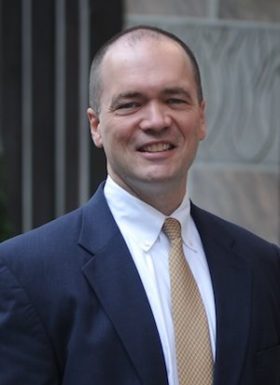Scholarship by Elon Law Professor Scott Gaylord recently published in the South Carolina Law Review addresses a federal circuit court split over the authority of states to require doctors to communicate specific information to patients prior to an abortion.

Published in the summer 2015 edition of the South Carolina Law Review, Professor Gaylord’s article is titled, “Casey and the First Amendment: Revisiting an Old Case to Resolve a New Compelled Speech Controversy.” Professor Gaylord’s introduction to the article follows:
“In Planned Parenthood of Southeastern Pennsylvania v. Casey, a plurality of the United States Supreme Court upheld a state statute that required ‘the giving of truthful, nonmisleading information about the nature of [an abortion] procedure, the attendant health risks and those of childbirth, and the ‘probable gestational age’ of the fetus.’ In the wake of Casey, several states began to require physicians to offer to perform, or even to perform, an ultrasound prior to an abortion to provide additional ‘truthful, nonmisleading’ information ‘to ensure that a woman apprehend the full consequences of her decision.’ Three states–North Carolina, Oklahoma, and Texas–went even further and adopted legislation– frequently called speech-and-display laws–requiring that (i) a woman who seeks an abortion undergo an ultrasound, (ii) the sonogram images be displayed so that she can see them, and more controversially, (iii) the physician who is to perform the abortion provide a medical description of the images that includes the ‘presence, location, and dimensions of the unborn child within the uterus’ and ‘the presence of external members and internal organs, if present and viewable.’ Although the physician is required to display and describe the image, the woman may ‘avert[ ] her eyes from the displayed images’ and ‘refus[e] to hear the simultaneous explanation and medical description.’ North Carolina’s statute, like the speech-and-display provisions in Texas and Oklahoma, provides an exception in cases of medical emergency.
“Not surprisingly, these speech-and-display laws were challenged before they ever took effect. What was surprising was that the physicians and abortion providers who sought an injunction did not base their claims solely on a woman’s Fourteenth Amendment due process right. Rather, the plaintiffs also asked the federal courts to strike down the speech-and-display laws on First Amendment grounds. In particular, the challengers argued that the speech-and-display provisions constituted government-compelled speech and, therefore, violated the physicians’ ‘right to refrain from speaking at all.’ The district courts agreed and enjoined the statutes without ever reaching the due process claim. On appeal, the Fifth Circuit upheld the Texas statute, relying in large part on a frequently overlooked section of Casey that rejected compelled speech claims of physicians: ‘To be sure, the physician’s First Amendment rights not to speak are implicated, but only as part of the practice of medicine subject to reasonable licensing and regulation by the State.’ Drawing on Casey and the Court’s subsequent decision in Gonzales v. Carhart, the Fifth Circuit rejected the physicians’ compelled speech claims, applying a form of rational basis review
“In December 2014, the Fourth Circuit issued its opinion in Stuart v. Camnitz, affirming the district court’s order that permanently enjoined North Carolina’s speech-and-display provision. Contrary to the Fifth Circuit, the Stuart panel applied heightened scrutiny to the physicians’ compelled speech claims. Even though North Carolina required doctors to convey only factual information relating to the sonogram images, the Stuart panel concluded the disclosures amounted to ideological speech that triggered at least intermediate scrutiny under the First Amendment. As a result, Stuart created a circuit split, and in the process highlighted several areas of uncertainty that have developed regarding Casey’s analysis of compelled speech claims in the medical context.
“Given this uncertainty and the fact that the North Carolina Attorney General has filed a petition for a writ of certiorari in Stuart, this Article explores the new circuit conflict emphasizing the central points of contention between the Fourth and Fifth Circuits. In particular, the first section analyzes both the Fourth Circuit’s argument that Casey requires courts to apply at least intermediate scrutiny to the physicians’ compelled speech claims and the Fifth Circuit’s contrary conclusion that Casey imposes only a rational basis review on speech-and-display laws. The second section critically evaluates this circuit split, exploring the key areas of disagreement between the Fourth and Fifth Circuits that the Supreme Court will have to resolve if it takes the case and that other circuits should consider when addressing similar compelled speech claims in the medical context.”
More information about Constitutional Law scholar Scott Gaylord is available here.


